In the wine world, Riesling is one of the most complex medium-bodied white wines you can drink. There’s something in it for everyone! It ranges from dry and crisp to plush and delicately sweet Rieslings. It originally grows in Germany. and thrives during the short growing season. This variety retains high levels of acidity which ages well with time, too. It makes Riesling the flagship grape for German wines.
Let us show you wines similar to riesling depending on your preferences.
About Riesling Wine
The Riesling grape is one of the most popular white wine grapes and it has distinctive characteristics. It comes in two types produces wines: sweet (sparkling or still) and dry Rieslings:
Sparkling Riesling wines are usually made in Germany’s dry style, with fruity and floral notes that balance with a high acidity. Sweet Rieslings, on the other hand, are often made in a sweeter style and have aromas of apricot, peaches, honey, and blossom.
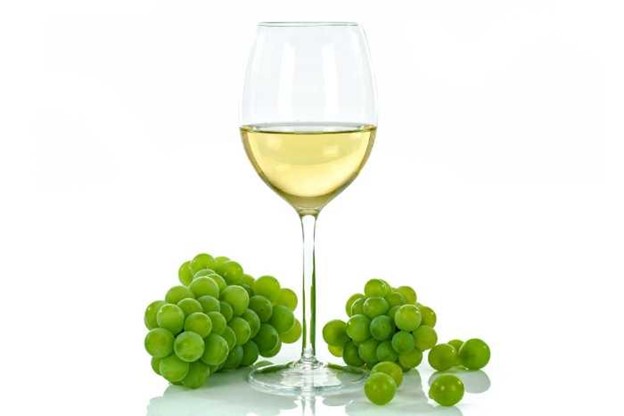
They also have a sweet-yet-tart flavor profile with elements of lime, lemon zest, orange blossom, and peach flavors. Dry Riesling wines are usually made in a more dry style, with less residual sugar. They have higher acidity levels and tend to be lighter in the body.
Aromas of dry Riesling wines can include minerals, slate, petrol, smoke, and even flint. The flavor profile is typically citrusy, with green apple and lime flavors, along with floral tropical fruit notes throughout.
Riesling Wine Description and Food Pairings
Riesling is a versatile and elegant white wine that originates from the Rhine region of Germany, but is now produced worldwide. This aromatic and fruity white wine is characterized by its high acidity, which provides a crisp and refreshing taste.
Riesling wines typically offer flavors of green apple, peach, apricot, and floral notes, with some varieties exhibiting a hint of minerality. The sweetness levels of this white wine can range from bone-dry to lusciously sweet dessert wines depending on the residual sugar. This makes it suitable for a wide range of food pairings.
When it comes to food pairings, Riesling’s high acidity and fruitiness make it an ideal match for a variety of dishes. Its vibrant acidity cuts through rich foods like creamy pasta dishes or buttery seafood, balancing out the richness with its refreshing taste.
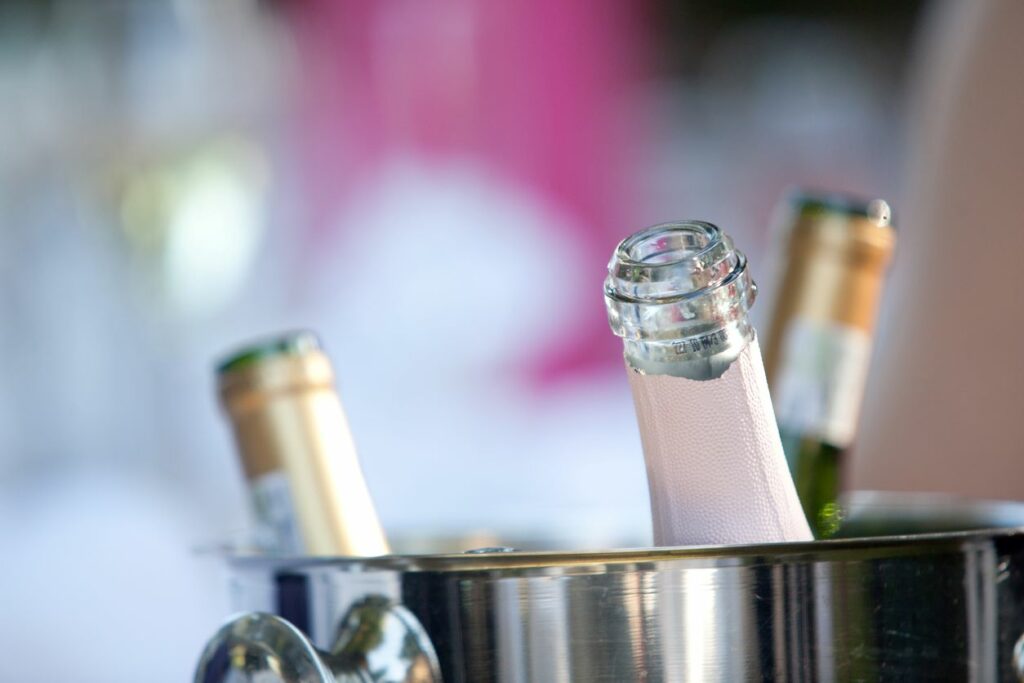
Furthermore, Riesling’s natural sweetness complements more spicy foods from cuisines such as Thai or Indian dishes by tempering the heat while enhancing the complex flavors. When paired with lighter fare such as salads or sushi, Riesling’s fruity profile elevates the overall dining experience by adding layers of complexity to the meal.
Sweet vs Dry Rieslings
When it comes to Riesling wines, the debate between sweet wine and bone dry wine styles often sparks lively discussions among wine enthusiasts. Sweet Rieslings, with a high residual sugar level, their luscious honeyed notes and vibrant fruit flavors, appeals to those seeking a dessert-like experience.
On the other hand, dry Riesling offers a crisp acidity and mineral character that highlights its complex citrus flavors and floral aromas. Both styles showcase the versatility of this aromatic grape, but each offers a distinct sensory journey.
Late Harvest and Ice Wine (Eiswein) Riesling wines
Late Harvest and Ice Wine Riesling is a delightful and rare treat for wine enthusiasts. With its unique production process, these wines offer a nuanced flavor profile that sets them apart from their counterparts.
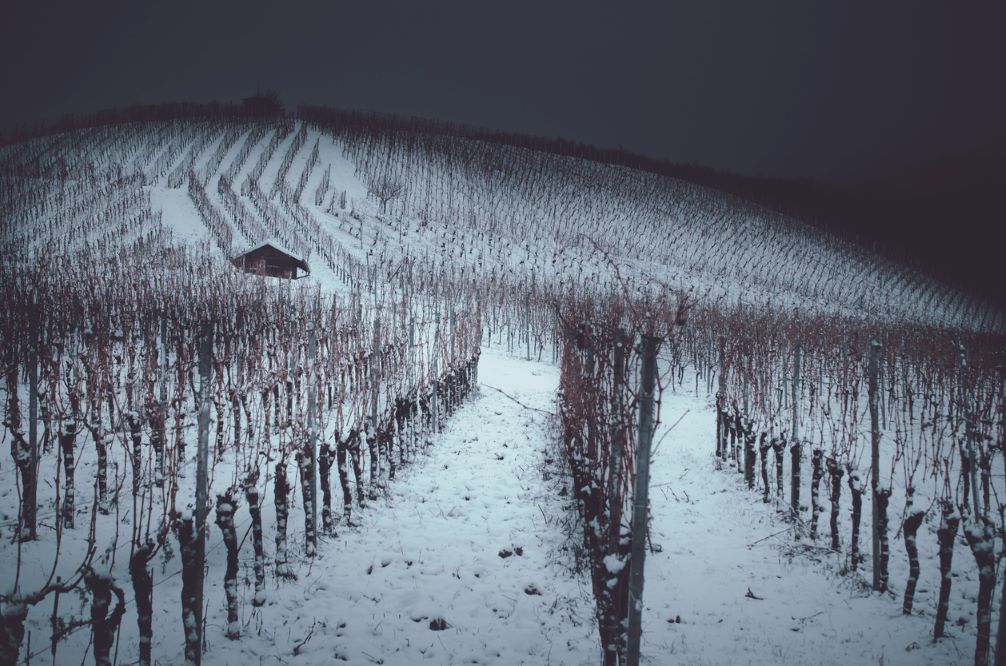
Late Harvest Riesling offers a rich and concentrated sweetness, balancing acidity, and aromas of honeyed apricot and tropical fruits. Conversely, Ice Wine Riesling captivates with its intense sweetness, vibrant acidity, and complex flavors of peach, pear, and citrus yielding a perfect dessert wine.
In the Niagara region of Canada chardonnay grapes are used for blends with Riesling grapes to make ice wines.
Sweet Riesling Characteristics
The labor-intensive process of producing Late Harvest and Ice Wine Riesling involves allowing the grapes to ripen on the vine until late in the season or even further until they freeze on the vine.
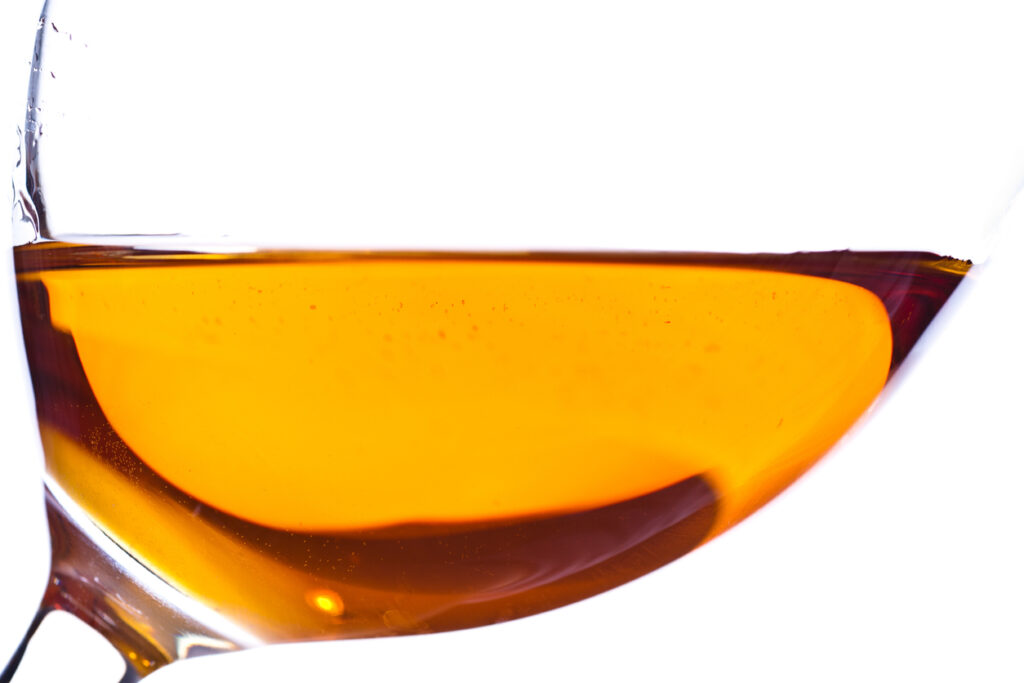
This results in sweeter wines with highly concentrated sugars that contribute to the exceptional flavor profiles found in these wines. The rarity of these wines adds to their allure, making them a prized addition to any wine collection or a special selection for an unforgettable occasion.
Benefits Of Riesling Wine
- Riesling wine has a very unique and pleasant flavor that many people enjoy.
- Riesling wine is very versatile and can be enjoyed with a variety of different foods.
- Riesling wine is relatively low in alcohol content, making it a good choice for those who are trying to avoid getting drunk.
- Riesling wine is thought to be beneficial for your health, as it contains several antioxidants.
- Riesling wine is relatively inexpensive, making it a good value for your money.
Wines Similar To Riesling: 6 Alternatives To Choose From
Now that you know a little more about Riesling wines and the Riesling grape, here are six alternative wines that taste similar.
Gewürztraminer
Gewürztraminer wines have a flavor profile similar to truffles. The grapes themselves are white, but they typically only grow around Lake Constance in Germany or Alsace in France where it’s warm enough for them to grow easily during summer months when others don’t want to due to their high maintenance needs (which includes irrigation).
These wonderful wines need some time on your palate before you enjoy them–you’ll know what I mean if we ever get together over dinner!
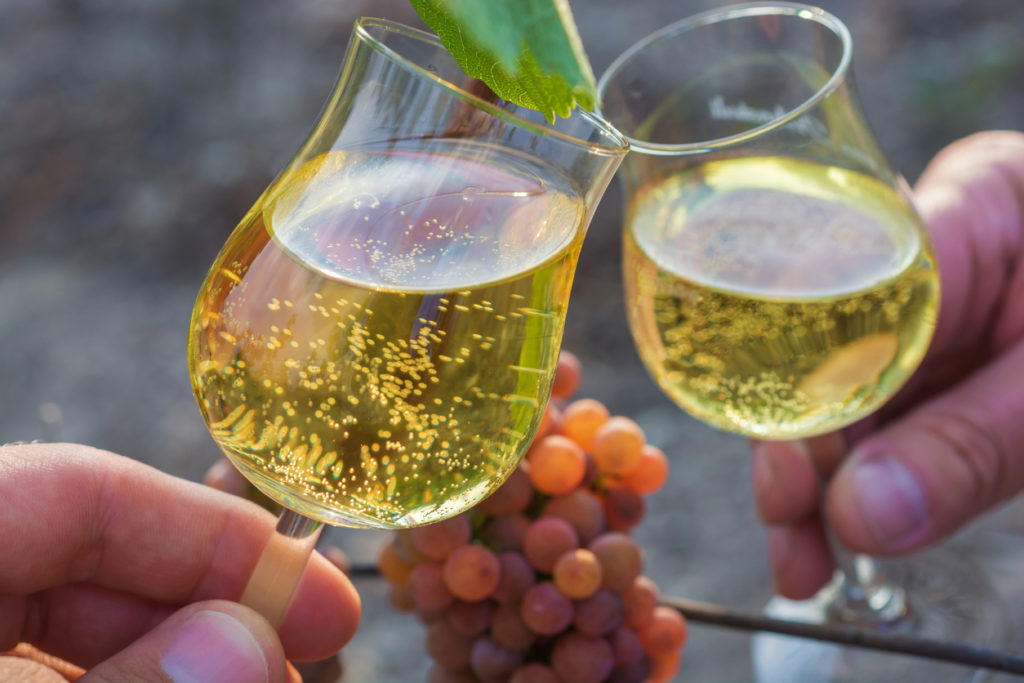
Gewürztraminer is another white wine grape that is similar to Riesling. It has a “spicy” character, with aromas of lychee, rose, and ginger. The flavor profile is similar to Riesling, with sweet and floral notes. It’s also a very versatile white wine grape that you can find in both dry and sweet styles.
Chenin Blanc
Chenin Blanc is a white wine grape that grows in many different regions, including the Loire Valley in France. Similar to the Riesling grape, you can get it in both sweet and dry styles.
Dry Chenin Blanc tends to have green apple and citrus notes on the nose, along with floral aromas like honeysuckle and jasmine combined.
On the palate, these wines are medium-bodied with a touch of acidity and lime flavors that are slightly spicy on the finish.
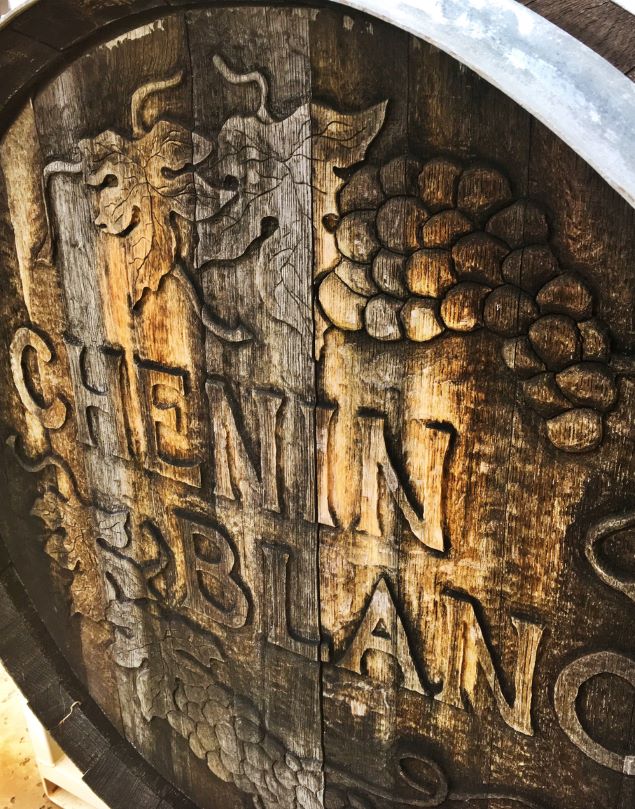
With its fresh and fruity scent, late harvest Chenin Blanc is a great choice among dessert wines. From lightening up classic cocktails to making refreshing wines cooler than ever before.
Albarino
Albarino is another grape variety similar to Riesling. It grows in the Galicia region of Spain, as well as Portugal’s Vinho Verde region. These wines are typically dry with high acidity, and they offer aromas of citrus, stone fruits, and white flowers. On the palate, you’ll find flavors of lemon, green apple, and peach, along with mineral quality.
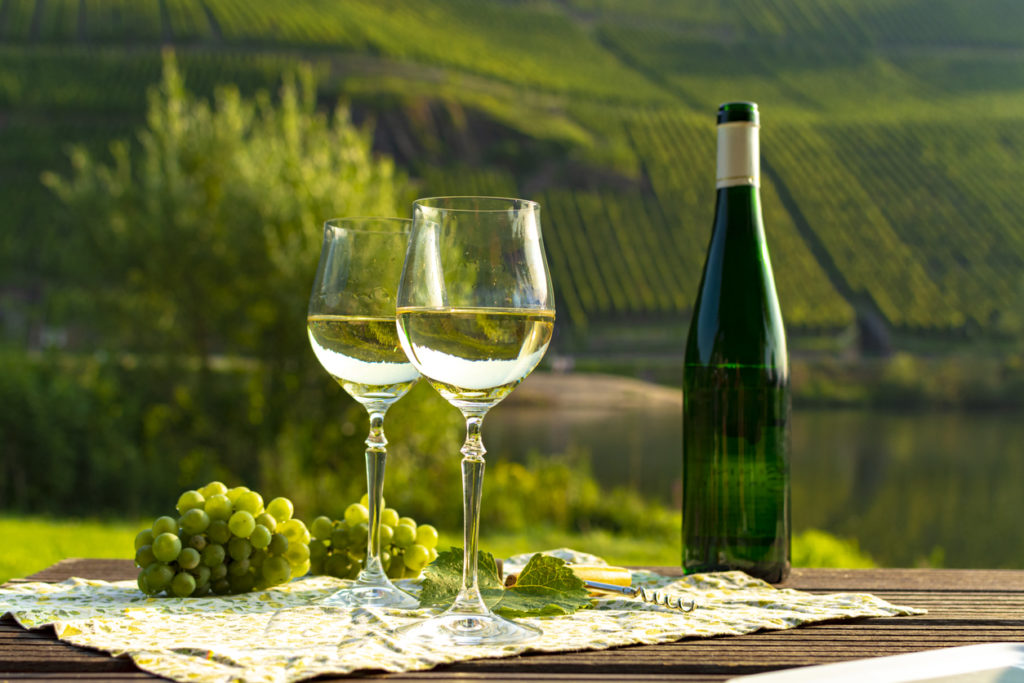
Sauvignon Blanc
Sauvignon Blanc is another popular white wine grape that has many similarities to Riesling. Dry Sauvignon Blancs can have aromas of grass, green bell pepper, and grapefruit. They’re typically medium-bodied and dry with flavors of citrus, lime peel, mineral on the palate and a high acidity.
Pinot Blanc
When it comes to the debate of Pinot Blanc vs Riesling, both varietals offer distinct characteristics that make them stand out in the world of white wines. Pinot Blanc, known for its crisp acidity and delicate floral notes, presents a more subtle profile compared to the vibrant and aromatic nature of Riesling.
While Pinot Blanc tends to showcase flavors of green apple and pear, Riesling often exhibits a spectrum of flavors from zesty citrus to honeyed sweetness, catering to diverse palates.
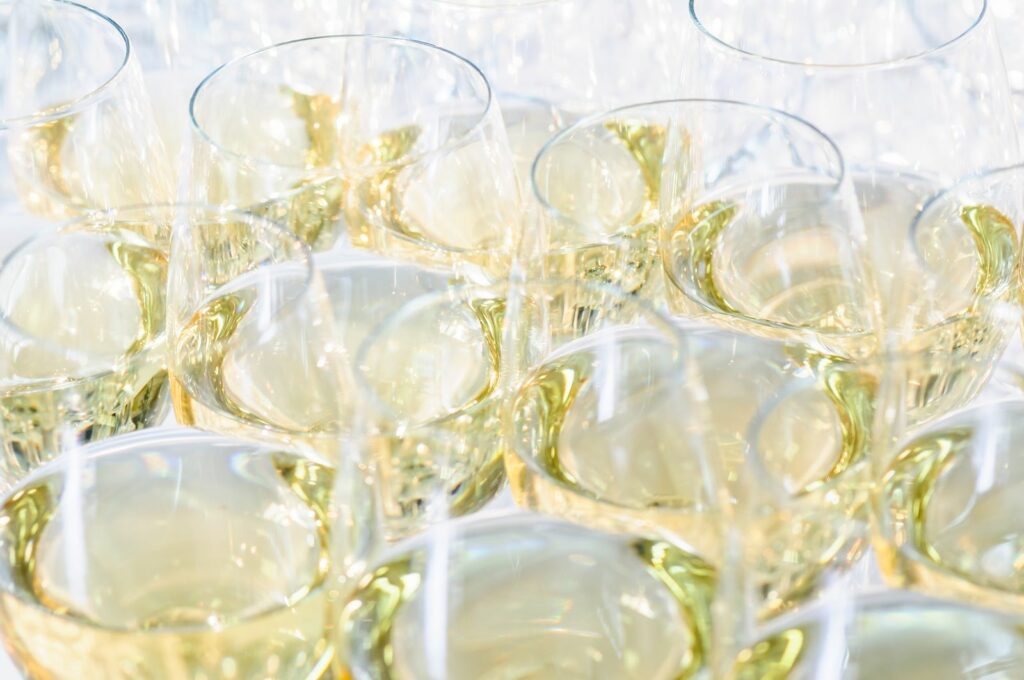
Despite their differences, both wines share the ability to express terroir with great transparency. Pinot Blanc shines in regions like Alsace and Germany while Riesling thrives in renowned wine regions such as Mosel in Germany and the Finger Lakes in New York.
Torrontes
When it comes to the battle of aromatic white wines, Torrontes and Riesling take center stage with their distinctive flavors and aromas. Torrontes, Argentina’s signature white grape, offers a unique combination of floral and citrus notes, along with a touch of spice. On the other hand, Riesling from Germany showcases its versatility with a wide spectrum of flavors ranging from zesty lime and peach to honeyed sweetness in late harvest styles.

While both Torrontes and Riesling are celebrated for their aromatic profiles, they also differ significantly in terms of acidity and sweetness levels. Torrontes tends to lean towards the fuller-bodied side with lower acidity, making it an ideal match for spicy foods or creamy dishes. Meanwhile, Riesling boasts racy acidity that can range from bone dry to lusciously sweet, offering unparalleled food pairing potential across a vast array of cuisines.
Pinot Grigio and Pinot Gris
Are you a wine enthusiast looking to expand your palate? If so, it’s time to dive into the world of light bodied wine and explore the differences between Pinot Grigio, Pinot Gris, and Riesling. Pinot Grigio, known for its light and crisp characteristics, hails from Italy and is beloved for its refreshing acidity and subtle fruit flavors. On the other hand, Pinot Gris originates from France and tends to offer a richer, more full-bodied taste with notes of pear, honey, and spice. Meanwhile, Riesling from Germany showcases a delightful sweetness balanced by high acidity, making it versatile enough to pair with both sweet and savory dishes.
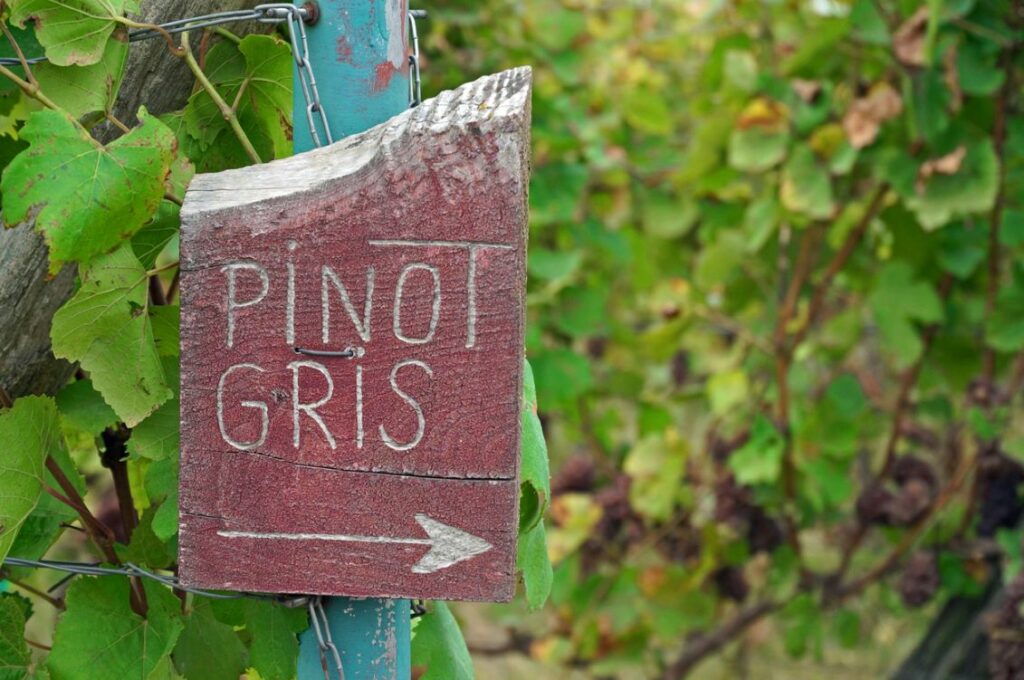
When comparing these varietals, it’s crucial to consider their terroir—the environment in which they are grown—which greatly influences their flavor profiles. Additionally,
while both Pinot Grigio and Pinot Gris belong to the same grape family (Pinot), their styles can differ significantly based on where they are produced. On the contrary,
Riesling stands out as a separate grape altogether with distinct aromas such as floral notes or petrol-like scents that set it apart from its counterparts. As you journey through these diverse white wines, embrace the nuances of each varietal while discovering new layers of complexity in every glass.
Muscat Blanc wines similar to riesling
Muscat Blanc has floral and fruity aromas, along with notes of white flowers like jasmine. The flavor profile of dry wine is typically sweet and crisp, making it a great alternative to sweeter Rieslings. The italian Moscato varietal is a prime example for these fruity and sweet wines.

Grüner Veltliner
Grüner Veltliner is a white wine grape that’s native to Austria. These wines often have a peppery character on the nose, along with citrus and stone fruit aromas. On the palate, they’re dry with medium acidity and flavors of green apple, lemon, and white pepper.
If you’re looking for an alternative to your favorite Riesling, any of the dessert wines above would be a great option. Each one offers similar characteristics in terms of floral aromatics off dry,, fruit flavors, and body. So, whether you’re looking for a dry or sweet wine, you’re sure to find something that suits your taste.
Pairing guide
You know Riesling as well as its alternatives. The wines can be readily paired with a number of dishes. They become versatile comapnions to your favorite dish. We build the complete pairing guide for Reisling and the alternatives you just decovered. In case we missed your favorite food poit it out to us. Enjoy!
| Wine | Varietal | Country | Food | Course |
|---|---|---|---|---|
Conclusion
Wines like Riesling offer a wide variety of flavors and aromas that can satisfy any palate. They are versatile enough to pair with many different types of food, and their sweetness can range from barely noticeable to very pronounced. No matter what your preference, there is sure to be a Riesling alternative that you will enjoy.
So, there you have 6 Riesling alternatives that you can try next time you want to enjoy a glass of wine. Whether you’re in the mood for something on the sweeter side, or with more crisp acidity, there is sure to be something on this list that will suit your tastes. Why not experiment with these delicious wines and see for yourself which one you like the best?

